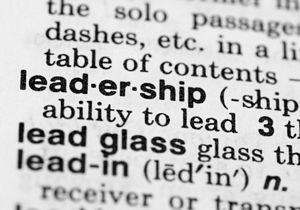We Need More & Better Leaders
/ Ironically, technical competencies are not the most valuable keys to success in light of the massive changes brought on by radical advances in technology, shifting demographics and the rise of competing global players. More than any single skill or means of adaptation that an individual or group will benefit from today is leadership. I think many might share the view that we certainly need more of it. At the center of most of our most fundamental challenges is the illusive stuff of leadership.
Ironically, technical competencies are not the most valuable keys to success in light of the massive changes brought on by radical advances in technology, shifting demographics and the rise of competing global players. More than any single skill or means of adaptation that an individual or group will benefit from today is leadership. I think many might share the view that we certainly need more of it. At the center of most of our most fundamental challenges is the illusive stuff of leadership.
Leadership has been defined as a “process of social influence in which one person can enlist the aid and support of others in the accomplishment of a common task”. Alan Keith of Genentech exposed that, "Leadership is ultimately about creating a way for people to contribute to making something extraordinary happen." Effective leadership is a series of behaviors based on a belief system that successfully integrates and maximizes available resources within the internal and external environment for the attainment of organizational goals. So why don't we see more of it ?
The gulf of leadership is largely a function of people's fears of failure and need to avoid discomfort and pain. True leadership is founded on a unique combination of humility, drive, curiosity, integrity, emotional intelligence and conviction. In our culture today many see leadership as notoriety, extravagance and hubris, reflecting a poor understanding of what it is. Great leaders are teachers, not doers, and in a world where there is belief that organizational achievement is a reflection of a single individual, teaching isn't as valued.
Mark Sanborn shares an interesting view on the failures of leaders and his 6 warning signs. A brief video clip from one of his lectures on leadership is included above. Leadership is not reflective of a dictator or task master. It is more represented by Deming's 14 points. There are fundamental components of leadership which can be applied to you and your organization which anyone at any level can offer. Want to be more successful during the tidal wave of change ? Try and adopt and reinforce with others you work with the 6 principals outlined below.
1. Knowing and focusing on what is important
2. Understanding each players role
3. Driving out risk aversion and fear as key motivators
4. Being competent in what is done
5. Having integrity by actions not words
6. Really caring about what is done, yourself and others










